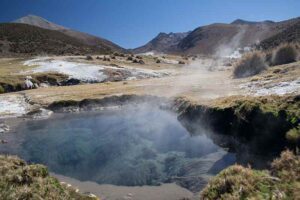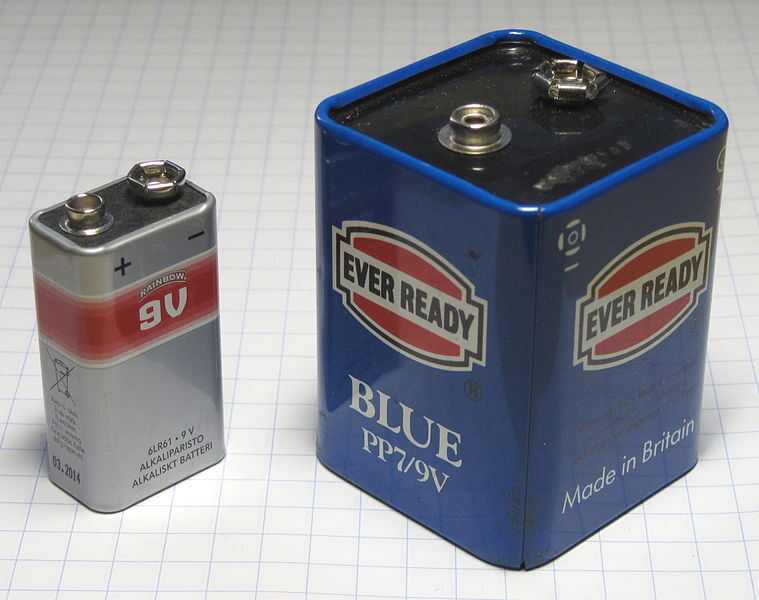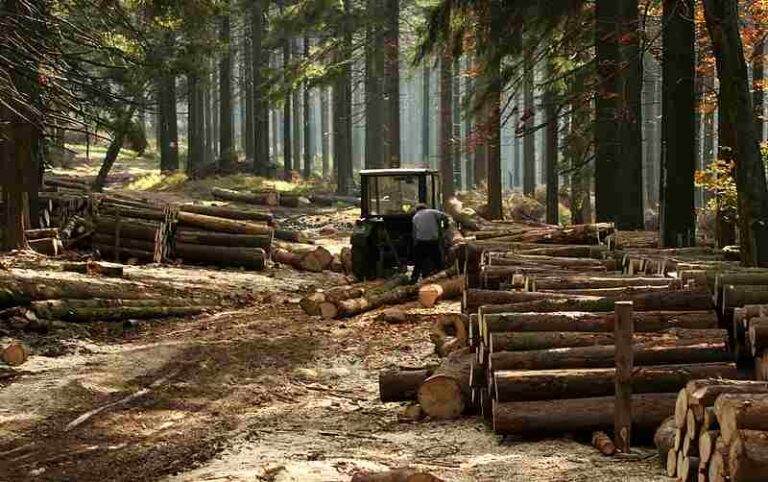5 Geothermal Energy Sources Explained
Geothermal energy sources are; hot dry rock, subsurface hydrothermal fluids, magma, mud pots, and hot springs.
This article discusses the geothermal energy sources, as follows;
1). Hot Dry Rock (as one of the Geothermal Energy Sources)
Hot dry rock (HDK) is a geothermal energy source that comprises of impervious rock materials with high melting point and thermal conductivity.
Geothermal energy can be derived from rocks when they occur at shallow depth less than 300 m, and have suitable physical properties to act as a temporary energy storage system for heat.
When hot dry rock serves as a geothermal energy source, there is usually less complexity provided suitable superconductor materials like graphene are used to extract geothermal heat from these rocks to the surface.
Geothermal energy from hot rocks is renewable because these rocks are constantly in contact with heat from radioactive materials in the Earth's core. Unlike hydrothermal resources, there is no risk of resource depletion when hot dry rocks are the primary source of geothermal energy.
2). Subsurface Hydrothermal Fluids
Hydrothermal-geothermal energy is heat usable from subsurface fluids.
The composition of hydrothermal fluids is highly variable, as it comes in contact with various minerals in the subsurface and dissolves many of these, which are then transported as solutes.
It must be noted that hydrothermal fluids include those which occur at the surface of the Earth, such as hot springs. These surface-occurring geothermal fluids are those which have escaped through vents, under the influence of high pressure [1].
For subsurface hydrothermal fluids, they are often pumped to the surface and used for heating and cooling purposes among others.
Subsurface hydrothermal fluids bear close spatial relationship with hot dry rocks, and often act as a natural energy storage system for geothermal heat. Their conductivity and heat-retention are both favorable attributes for their role in the conservation and transmission of geothermal energy.
3). Magma (as one of the Geothermal Energy Sources)
Magma may be used an energy source which transmits large amounts of heat to fluids and solid rocks in the subsurface of the Earth.
It is arguably the most potent geothermal energy source, because its mobility as a fluid, and its extremely-high temperatures imply that it can transfer heat effectively into remote zones in the mantle and crust.
Other geothermal energy sources use magma as a mobile and accessible reserve for energy replenishment. Its mineralogic composition also makes it an efficient medium for geothermal energy conservation, so that the dynamics of confinement, pressure and temperature combine to reduce energy waste in the form of heat losses.
Magma makes volcanoes a prospective source of energy that is being considered for potential energy transition developments in the future [3].
Countries with significant volcanic features are generally more equipped to integrate geothermal energy into their economies [5] [2].
4). Mud Pots
Also known as mud pool, a mud pot is a geothermal feature comprising of clay-filled shallow ponds or pits that are continuously heated by subsurface radiation.
Mud pots work by upwelling and thermal diagenesis, whereby hydrothermal fluids in the subsurface heat soil and rocks as they rise, transforming minerals like feldspar into clays, so that the result is a bubbling-hot surface pool of clayey water.
Like other geothermal energy sources, mud pots occur mostly along zones of significant tectonic activity [4].
They are considered geothermal energy sources in the sense that they contain geothermal heat, even if they can not be used commercially as an energy resource.

5). Hot Springs (as one of the Geothermal Energy Sources)
Hot springs or geothermal springs are hydrothermal fluids that have reached the surface through vents in the Earth's crust.
Geothermal energy comes from hot springs as a result of contact between underground water and hot dry rocks, magma, or other geothermal sources in the subsurface.
Because of the conductive and energy storage capabilities of water, it is able to convey geothermal heat effectively to the surface.
Hot springs are among the earliest-used geothermal energy sources, whose relevance spans across various areas that include recreation, electricity generation and heating, among others.

Conclusion
Geothermal energy sources are;
1. Hot Dry Rock
2. Subsurface Hydrothermal Fluids
3. Magma
4. Mud Pots
5. Hot Springs
References
1). Arnorsson, S.; Stefansson, A.; Bjarnason, J. Ö. (2007). "Fluid-Fluid Interactions in Geothermal Systems." Reviews in Mineralogy and Geochemistry 65(1):259-312. Available at: https://doi.org/10.2138/rmg.2007.65.9. (Accessed 1 February 2023).
2). Deamer, K. (2017). "Magma Power: Scientists Drill into Volcano to Harness its Energy." Available at: https://www.livescience.com/57833-scientists-drill-volcano-core-geothermal-energy.html. (Accessed 29 January 2023).
3). Dillow, C. (2015). "Are volcanoes the energy source of the future?" Available at: https://www.cnbc.com/2015/01/05/are-volcanoes-the-energy-source-of-the-future.html. (Accessed 29 January 2023).
4). Okolie, S.; Ozuor, O.; Fajehinde, O.; Ongbali, S.; Fayomi, O. S. I.; Agu, F. A. (2019). "Study of Nigeria Geothermal Energy resources’ Viability, Brief Production Techniques and Transportation." Energy Procedia 157:1475-1485. Available at: https://doi.org/10.1016/j.egypro.2018.11.312. (Accessed 31 January 2023).
5). Rowley, P. (2016). "Magma power: how superheated molten rock could provide renewable energy." Available at: https://theconversation.com/magma-power-how-superheated-molten-rock-could-provide-renewable-energy-67725. (Accessed 29 January 2023).





